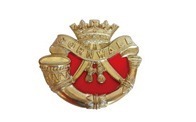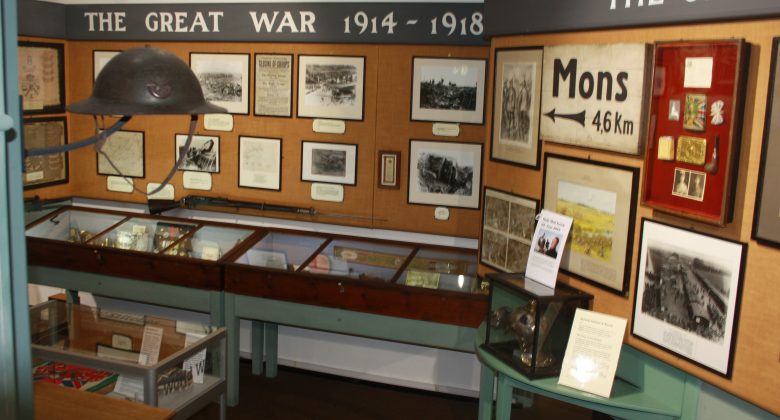We were thrilled to have Luke, a student on work experience with us at Bodmin Keep last week. He worked closely with most of the museum team completing varied activities including attending a Bodmin Partnership meeting and having a VIP tour of Bodmin Jail to uncovering military records in the archive, meeting and greeting visitors and getting hands on getting our new exhibitions, displays and family activities ready for the summer holidays. Our aim was to give him a broad understanding of what goes on behind the scenes at a museum and he certainly got stuck in!
Thanks for all your hard work Luke, it was great having you with us!
You can read the blog post Luke has written about his week at the Keep below.
My Work Experience at Bodmin Keep
Hello, my name is Luke and I chose my Year ten work experience opportunity to be at Bodmin Keep. The reason for this is my general love for military history and because I have been here once before and loved the museum and all of the objects it has. This opportunity has also had the side benefit of allowing me to know the Keep and its contents more closely. My expectations were certainly exceeded and I’d definitely recommend this placement to anyone even remotely interested in military history or Cornish (and by extension South West) Heritage.
I have chosen two objects in the museum to write about and the first is the “D-Day Dodgers” script on the first floor in the military musician exhibit. The song is about an alleged remark by Lady Astor in 1944, calling all Allied servicemen stationed in Italy “D-Day Dodgers”. It was written by those said servicemen and is a sarcastic response; calling themselves D-Day dodgers and chronicling their holiday through Italy with no resistance at all by the Axis forces defending the nation. Alongside the script is a Banjo covered in the Insignia of the Duke of Cornwall’s Light Infantry and various locations in which the soldiers had fought in. These range from the Gustav line to Piedmont both in the Italian campaign itself. As a final touch there is “D-Day Dodgers” written on the front of the Banjo, directly linking it to the script itself nicely. Both objects provide insight into the comradery and bonds formed within the army, how soldiers spent their time out of combat and what they did to entertain themselves.
Secondly, I have chosen the SCLI scrapbook of the 1st Battalion in the archives room. This grand old book is almost imposing when you first see it due to it’s sheer thickness, but once you open it up and start reading you can see the amount of time and effort the author put into creating it. The entire book is handwritten with pen, has delicately cut out newspaper clippings of the era and even insignia’s of each regiment once again carefully cut out from paper and stuck in. All of this is a compliment to the vast array of historical photos stored within, all likely never seen before by the masses. The scrap book is primarily focused on Berlin during the Cold War. The events range from tense stand offs between mechanised units of the Red Army and British Army to training drills with French and U.S. Soldiers, Extravagant military parades with artillery guns firing to Tchaikovsky’s 1812 Overture, newspapers mourning the death of Sir Winston Churchill or even just pictures of servicemen posing in uniform, and that is just in Berlin! There are parts in Canada, Norway and more.
If I had to choose a favourite task from my five day placement here it would definitely have to be working in the Archive room! There is so much hidden away in there which can tell several stories per photograph or document. Firstly, I was shown around the room and presented with a fascinating photo album from Lucien Eugene Oudin, a Captain of the 7th battalion who had presumably taken his camera into the trenches with him. The album helps to illustrate the immensely harsh conditions every man served in across both sides of the war. There are some with literal lakes worth of water flowing behind trench lines, others were impromptu photoshoots of various men of his battalion from officers to rank and file soldiers, and even a picture of the frontlines itself, due to the blurred nature it’s reasonable to believe he simply threw his hand up and took a quick picture before quickly retreating to safety of the trench. After this we moved onto a set of Commissioning documents and I was quickly showed how to note down the key details of each document, including serial number, name, rank, branch and the date of promotion. I sorted through a fair few of them, ranging from 1693-1953 with the reigns of George IV to Elizabeth II. The most unique one was a Commissioning document from Sudan in 1927. Rather than addressing the letter from the reigning monarch of the United Kingdom it was addressed from the Director Governor of Sudan and had two halves to the document, one in English and the other in Arabic. Only the English side had been filled in with the key details due to the recipient being British themselves. One envelope had six Commissioning documents in it from 1826 to the late Victorian era and the ranks themselves being considerable, from a lowly ensign to a mighty Colonel!
Before this placement I only thought Cornishmen were scattered around various battles in small numbers, achieving monumental things alongside their British comrades. My time here has proven otherwise, we were in Iberia, the western front, Africa, saw the fall of the German Empire, the fall of the Third Reich, the end of the Soviet Union and even the Indian mutiny with the siege of Lucknow. There is even a story from my town of Newlyn about the local art school and a powerful painting produced by a father whose son would find his end in the western front of the First World War. The point being no matter where in the Dutchy or our neighbours who served in the DCLI and its various predecessors and its successor regiments, there will be a slice of history to go with the beautiful scenery.


